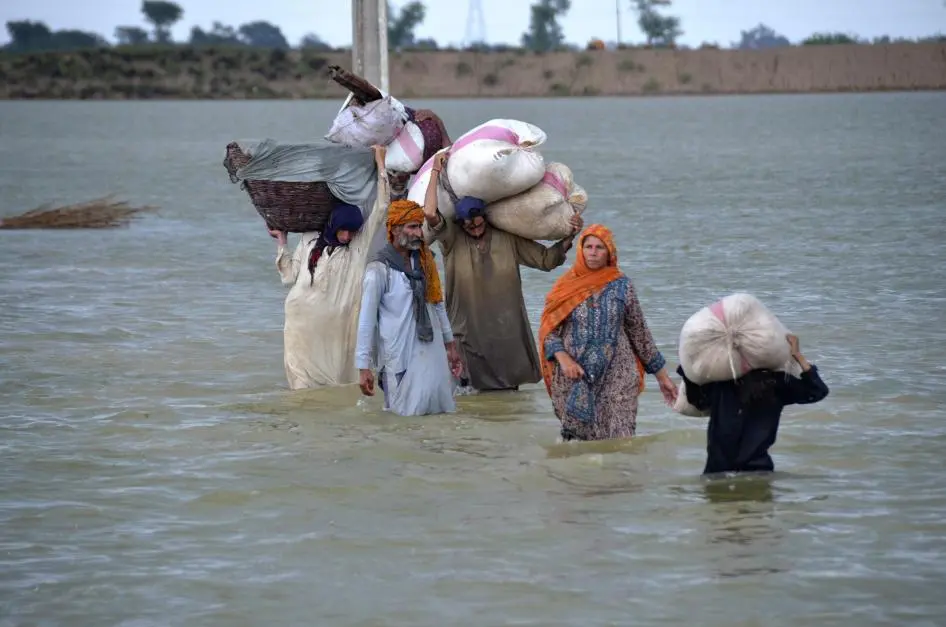In the Summer of 2025, Pakistan was again ravaged by monsoon rains and flash floods that submerged large swathes of land, overwhelmed its defences, and ended the lives of millions. While flooding is a recurring feature of the country’s geography, the deluge of this year stands out in terms of damage, scale, and socio-economic consequences. From the mountainous north to agricultural heartlands in Sindh and Punjab, no region in Pakistan has remained untouched by excessive flooding. Let us walk you through more valuable information in this crucial article!
The Causes
Pakistan has been receiving incessant monsoon rains, which have caused devastation in the country since the end of June 2025. Flash floods in the northern mountains of Khyber Pakhtunkhwa, Gilgit-Baltistan and Azad Kashmir have been caused by torrential downfalls. Riverine flooding has been experienced in the south of Punjab and Sindh along rivers Ravi, Sutlej and Chenab, which have risen above their banks. Fields, villages, and towns are now drowned under water, and banks of swollen rivers, caused by downstream rains and water releases across borders, have added to the calamity. Adding more to this, Critical barrages, such as Guddu in Sindh, where the force of inflows endangers further havoc, have now been warned.
Experts believe that the extent of damage is not only natural but also man-made. The rainfall is becoming more intense and more erratic due to climate change. Millions of people are now exposed to unplanned urbanisation, poor drainage systems and deforestation that has gone uncontrolled. All communities have not been spared, and floods are more devastating than ever.
The Human Toll
As of late August, the NDMA (National Disaster Management Authority) confirmed at least 785 deaths. Aside from this, more than 1,011 people have been injured in monsoon floods across the country. Since June 26, flash floods alone have caused the death of 299 citizens, and among those were 140 children. Thousands of homes and key infrastructure have also been destroyed.
Who & What Regions are Worst Hit?
Punjab is now in the category of the hardest-hit provinces in the 2025 floods. More than 4.1 million people have been affected across 4,100 villages in 25 districts. Almost 2.4 million individuals have been evacuated to safer locations because of the overflow of rivers into communities. KP (Khyber Pakhtunkhwa) has faced sudden cloud bursts in its mountain districts. The ruin here has been severe, with most of the casualties reported from the province.
Not only this, but Sindh and Balochistan are also reeling under this whole disaster. In these less-connected and largely rural regions, the damage is just widespread. Villages along riverbanks in Sindh remain underwater, forcing many families to flee. However, relief operations are stretched thin as the downstream flow continues to rise. Sacettered communities in Balochistan struggle with isolation and restricted access to medical or emergency facilities.
What About Economic Impacts?
Floods in Pakistan in 2025 have hit the economy of the country hard. The agriculture sector alone has incurred the loss of about 1.4 billion US dollars. Giant rice, cotton, maize and sugarcane areas have been destroyed. Additionally, farmers are deprived of millions of dollars.
The financial crisis is worldwide. One of the major contributors to the GDP of Pakistan is agriculture. Growth forecasts in FY2026 are being cut due to lower output. Well, the declining share in the sector would reduce the recovery and make the sector more dependent on imports.
Another issue at hand is food security. Ways of crop cycles and supply chains have been broken. Highways and areas of storage have been swept away. They are already experiencing shortages that are increasing the costs in rural locations. Analysts predict that even in the most affected areas, the cost of simple foodstuffs will increase by 20 to 30% aggravating poverty and hunger.
Final Thoughts: A Nation’s Test
The floods of 2025 have stretched Pakistan to the brink, and the cracks that were previously neglected by the world have been revealed. Not only are these floods seasonal disasters, but they are also a wake-up call about how changes in climate are increasing ancient dangers. Every year, the stronger floods and more rainfall cause heavier rains to already vulnerable communities. The destruction of Punjab is an indicator of how millions of people still reside without safety nets as they have to rebuild their lives on unstable grounds. The disaster shows how resilience cannot be based on the hope factor alone, but it must be prepared, visionary and more robust.
Yet amid tragedy, several acts of strength have emerged. Communities have mobilised quickly, emergency teams have saved countless lives, and relief camps have sheltered the displaced. Early warning systems have improved compared to past years. Without serious investment in climate-resilient infrastructure, there are risks of having the same cycle, so it must be prepared

